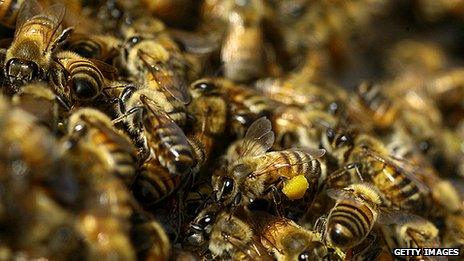Viewpoint: Gartner on the changing nature of work
- Published

As part of our Future of Work series running throughout February, we asked some experts to give us their take on how the way we work is going to change.
Tom Austin, vice president at Gartner, has been a Gartner Fellow for a decade. He has also been chief of research at Gartner for social software, collaboration, communications, information management, business intelligence and the high-performance workplace, and is now leading an effort at defining "people-centred strategies".
If you were to sit down today and create a company completely from scratch, would you copy the processes, practices and structures of today's organisations, or would you try to do something different?
Of course, I ask this knowing that the world of work has changed dramatically in the past 20 years. As the lines between work and non-work become increasingly entwined, it's certain that we are in for yet more radical changes in the years to come.
The changing nature of work means that organisations need to plan ahead for increasingly chaotic environments. The future of work will be a mix of many styles, evolving in various ways in different environments and cultures.
There are 10 key ways in which the world of work is changing. Some are known long-term trends, while others reflect near-term recognition of the increased speed of change. Either way, organisations need to plan for these mega-trends over the next decade.
De-routinisation of work
The core value that people add does not lie in processes that can be automated.
It lies in the non-routine, uniquely human, analytical or interactive contributions that people make, which often relate to discovery, innovation, teaming, leading, selling and learning.
For example, we cannot automate the process of coming up with a new advertising theme - but we can help marketers find earlier variants and test their likely impact.
Teamwork - as opposed to solo performances - will be valued and rewarded more, and occur more frequently.
Swarming is a new and different form of teamwork, characterised by a flurry of collective activity from everyone available and able to add value.
In swarms, if individuals know each other at all it may be just barely - via weak links or cues that people pick up from others who know the people they have to work with.
These are indirect indicators and rely on the confidence others have in their knowledge of people.
Navigating one's own personal, professional and social networks helps people develop and exploit the strong and weak links that will be crucial to surviving and succeeding with swarms.
Gartner labels informal groups that are beyond the direct control of organisations and bound by a common interest, fad or historical accident as "collectives".
Collectives impact organisations' success or failure.
Smart business executives discern how to live in a business ecosystem they cannot control but can influence. Understanding the collectives that potentially influence their organisation, as well as the key people in these external groups, is essential.
Most non-routine processes will also be highly informal.
It's important to try to capture the criteria used in making decisions but, at least for now, Gartner does not expect most non-routine processes to follow meaningful standard patterns, and the process models will remain simple sketch-ups created as needed.
Spontaneity will trump reactivity. This implies growth in proactive work, such as seeking out new opportunities and creating new designs and models.
Active engagement with simulated environments will replace drilling into cells in spreadsheets.
Gartner envisions different representations of many sorts of data, navigable at human scale in simulated environments, assembled by agent technologies that determine what materials go together on the basis of watching people work with content.
Gartner expects significant growth in groups specifically charged with detecting emerging divergent patterns, evaluating them and developing scenarios for how disruption might play out.
Hyper-connectedness is a property of most organisations, existing within networks of networks, unable to completely control any of them.
Hyper-connectedness will lead to more work crossing company boundaries in both formal and informal relationships. This has implications for how people work and how IT supports or augments that work.
The workplace is becoming increasingly virtual: with meetings occurring across time zones and between organisations, and with participants who barely know each other working in swarms to tackle rapidly emerging problems.
Nevertheless, employees will still have a "place" of work, though many will have neither a company-provided physical office nor a desk, and their work will increasingly happen 24 hours a day, seven days a week.
In this work environment, the lines between personal, professional, social and family matters, will disappear.
Individuals need to manage the complexity created by overlapping demands, whether from the new world of work or from external, non-work-related, phenomena.